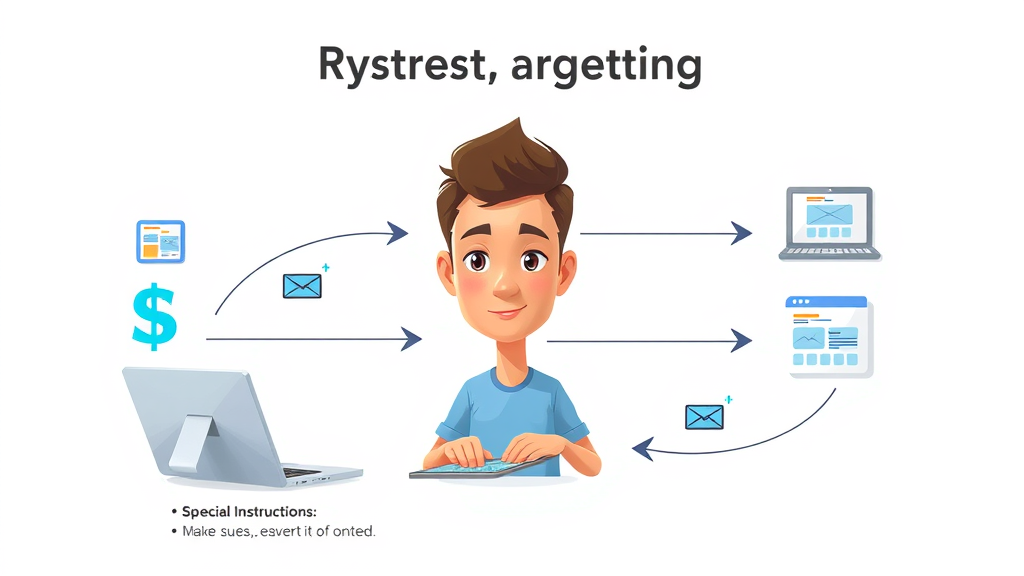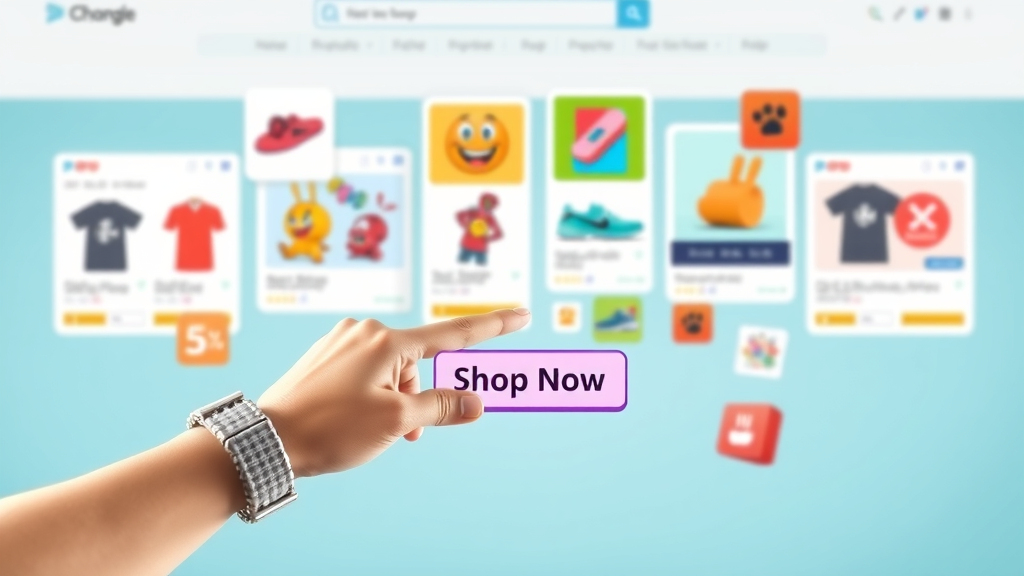Did you know that retargeting can lift ad responses by up to 400% compared to standard display ads? If your marketing strategy lacks a focused retargeting ads setup, you’re missing out on the most powerful way to bring potential customers back and supercharge your sales. In this comprehensive guide, you’ll learn step-by-step how to build, launch, and scale high-converting retargeting campaigns so your marketing campaign never leaves money on the table.
Why Retargeting Ads Setup is the Secret Weapon in Every Smart Marketing Campaign
Every seasoned marketer knows that only a fraction of visitors convert on their first website visit. This is where retargeting ads setup works wonders—following interested users after they leave, reminding them to return and take action. Properly implemented, ad retargeting boosts brand awareness, warms up your audience, and keeps your product or service top of mind until they’re ready to purchase.
Compared to general prospecting ads, retargeting campaigns offer much higher conversion rates and a better marketing ROI. Smart marketers rely on retargeting to nurture leads, re-engage those who’ve shown interest, and maximize every advertising dollar spent. With a strategic retargeting ads setup, your marketing campaign becomes a persistent force that nudges potential customers closer to buying.
The Startling Power of Retargeting: Stats That Will Change Your Marketing Strategy
"Retargeting can boost ad response by up to 400% compared to conventional display ads." – Digital Marketing Institute
Industry studies underline how retargeting ads create meaningfully stronger results than traditional ad campaigns. Data shows that users seeing a retargeting ad are up to 70% more likely to convert than those who aren’t. High-performing brands depend on retargeting as a foundational pillar in their overall marketing strategy, using platforms like Google Ads and Facebook Ads to drive growth at scale.

What You’ll Achieve by Mastering Retargeting Ads Setup
- Understand the fundamentals and benefits of retargeting ads setup
- Step-by-step methods to launch a powerful retargeting campaign
- Best-performing platforms for retargeting ads, including Google Ads and Facebook Ads
- How to measure and optimize your ad retargeting results
- Expert insights, useful tools, and actionable checklists
By the end of this guide, you’ll know exactly how to set up ad retargeting on the most effective platforms, optimize campaigns using data-driven tools like Google Analytics, and measure the true impact of your efforts. Whether you’re an e-commerce store, B2B service, or local business, mastering retargeting ads setup empowers you to drive higher sales and reduce wasted ad spend.
Retargeting Ads Setup: Core Concepts and How Retargeting Work
Defining Retargeting Ads and How They Work in a Marketing Campaign
Retargeting ads are a dynamic form of online advertising designed to follow up with people who’ve already interacted with your website or mobile app but didn’t convert. The core idea is simple: after a site visitor leaves your page without taking the desired action, such as making a purchase or signing up, ad retargeting campaigns serve them targeted ads as they browse other websites or social media platforms, nudging them back.
This mechanism relies on cookies or tracking pixels placed in the website code, building a custom audience or remarketing list. As a result, your marketing campaign can be laser-focused on segments of users who have demonstrated interest in your product or service—boosting the likelihood of conversion and maximizing your ad spend with minimal wastage.

How Retargeting Campaigns Compare to Traditional Marketing Strategy
Unlike broad prospecting ad campaigns that try to attract new eyes, retargeting campaigns specifically pursue users who have already engaged with your brand. This means the audience is “warm”—they’ve shown an active interest but weren’t ready to convert immediately. Therefore, ad retargeting is miles ahead when it comes to a direct, cost-efficient marketing strategy.
In practice, you can run static ads (same ad shown to all return visitors) or use dynamic retargeting, where ads are auto-tailored to show products or services individual users previously viewed. Popular channels include Google Ads retargeting , Facebook Ads retargeting , and other social media remarketing networks. Each platform has specific tools for building high-impact custom audiences, giving you flexibility and reach for different marketing campaign goals.
- Retargeting ads vs. prospecting ads
- Channels: Google Ads, Facebook Ads, social media platforms
- Types: dynamic retargeting, static retargeting
Setting Up a Retargeting Campaign: Step-by-Step Process
Choosing the Right Platform: Google Ads Retargeting, Facebook Ads, and More
The first step in retargeting ads setup is deciding where your potential customers are most active. For many brands, Google Ads and Facebook Ads are the go-to platforms—both boast vast reach and advanced remarketing tools. Google Ads allows you to retarget across millions of sites, YouTube, and Gmail, while Facebook Ads unlock powerful targeting on Facebook, Instagram, and their extended Audience Network. You can also explore other social media ad retargeting networks if your audience skews to platforms like LinkedIn or Twitter.
Comparing channels is crucial. Google Ad retargeting may require a bit more setup but integrates deeply with Google Analytics. Facebook Ad retargeting shines for its simple campaign creation and ability to use rich media. Evaluate the audience size, ease of setup, and how each network integrates with your existing marketing tools before launching your campaigns.
- Google Ad retargeting setup
- Facebook Ad retargeting campaign creation
- Social media retargeting platforms comparison
| Platform | Audience Size | Ease of Setup | Integration |
|---|---|---|---|
| Google Ads | Large | Medium | High |
| Facebook Ads | Large | Easy | High |
| Other Social Media | Variable | Variable | Medium |
Configuring Audience Manager & Creating Your Remarketing List
With your platform selected, open the Audience Manager in your chosen ad tool (Google Ads, Facebook Business Manager, etc.). Create a new remarketing list by specifying criteria such as all website visitors, users who viewed product pages, or those who added items to cart but didn’t complete checkout. The key is to craft audience segments that align with your specific marketing goals.
Granular audience segmentation makes your ad retargeting smarter. By dividing users into groups (e.g., new visitors, returning customers, abandoned carts), you can tailor ad creative and offers to maximize relevance, which boosts both click-through and conversion rates in every retargeting campaign.

Installing Tracking Pixels for Retargeting Ads Setup
The magic behind retargeting ads setup is in the pixel. This tiny snippet of code, when installed on your website, tracks visitors’ actions and adds them to your custom audience for future remarketing. Google Analytics and Facebook Pixel are the two most common methods—install these pixels before running any retargeting campaign to ensure you’re capturing valuable data on every site visitor.
Implementing pixels shouldn’t be rushed. Ensure accurate placement for correct tracking—errors can result in missed opportunities, misdirected ads, or even compliance issues. Once installed, always verify tracking activity through the analytics dashboard provided by each ad platform and regularly audit for potential interruptions or site changes.
- Google analytics pixel setup
- Facebook pixel installation
- Best practices for accurate visitor tracking

Crafting Retargeting Ads: Copy, Imagery, and Calls to Action that Convert
Top Elements of Successful Retargeting Ad Campaigns
The strength of your retargeting ad comes down to relevance. Tailor your ad copy to remind visitors why they considered your product or service in the first place. Whether it’s highlighting social proof, scarcity (“Only a few left!”), or past browsing actions, make the ad feel personalized to each audience segment.
Engaging visuals and videos drive home your message. Show the actual products users viewed or reinforce your brand identity with attention-grabbing designs. Always pair these elements with a clear, actionable call-to-action (CTA)—whether it’s “Shop Now,” “Download Free Guide,” or “Return to Cart,” your CTA should clarify the benefit and next step.
- Ad copywriting tailored for audiences who visited your website
- Engaging images and video content
- Clear, compelling calls to action

Segmenting Audiences for More Effective Retargeting Ads Setup
Not every website visitor is at the same stage of the buyer’s journey. Smart marketers segment their retargeting campaigns to deliver hyper-relevant messaging to each audience segment. For example, new visitors may see ads introducing your brand, while those who abandoned a shopping cart receive reminders about their unpurchased items—often with a personalized offer or free shipping incentive.
You can build custom audience segments in tools like Audience Manager , targeting by time spent on site, specific pages visited, or interaction level. This kind of segmented retargeting ads setup keeps your campaigns efficient, as you’ll deliver the right ad to the right person at the right time, ensuring no wasted impressions or budget.
- New vs. returning visitors
- Abandoned cart retargeting
- Custom audience manager tactics
How Personalization Elevates Your Retargeting Campaign Results
Personalization isn’t just a buzzword—it’s a strategic differentiator. Data-driven retargeting ads that incorporate users’ browsing histories, displayed products, even geolocation, create a personalized ad experience that dramatically increases engagement. When users feel seen and understood, they’re far more likely to click and convert.
By leveraging dynamic ad creative, you can insert user-specific products or offers right into your ads. Strong personalization in your retargeting campaign makes potential customers feel valued, re-engages those who’ve shown interest, and consistently outperforms generic messaging in both CTR and ROAS (Return On Ad Spend).

Optimization Strategies for Retargeting Campaign Performance
How to Monitor, Analyze, and Improve Your Retargeting Ads
An effective retargeting ads setup doesn’t end at launch. To maximize your results, regularly monitor and analyze campaign data using Google Analytics and built-in platform reporting tools. Track metrics like click-through rates (CTR), conversions, and frequency to see which ads are resonating and where your campaign can be improved.
Continuous split testing (A/B testing) of ad creatives, adjusting bid strategies, and tweaking your audience segments can drive meaningful improvements in both conversion rate and ROI. Use the insights from your analytics to spot drop-offs and quickly iterate, ensuring your ad retargeting strategy adapts to shifts in user behavior or platform algorithms.
| Metric | Importance | Tool | Best Practices |
|---|---|---|---|
| CTR | High | Google Analytics | A/B test ad creatives |
| Conversion Rate | High | Google Ads/Facebook Ads | Tailor offers |
| Frequency | Medium | Platform Tools | Cap frequency |
The Role of Google Analytics in Retargeting Ads Setup
Google Analytics is essential for refining retargeting campaigns. It tracks visitor behavior, reveals high-dropping points on your site, and maps conversion journeys. You can use it to set specific retargeting goals, build audience segments based on detailed engagement metrics, and attribute conversions to the correct traffic sources.
- Measuring visitor behavior
- Setting retargeting goals
- Tracking conversion attribution

Remarketing Campaigns: Adjusting Bids and Budgets for Better ROI
One of the most impactful levers in a remarketing campaign is bid and budget management. Monitor high-performing audience segments and allocate more budget to those delivering the strongest ROI. Lower bids for users less likely to convert, such as those with minimal site interaction or lengthy lapses since their last visit.
Regular bid adjustments, campaign scheduling, and frequency caps not only avoid overexposure but also make the most of your advertising dollars. Effective budget optimization will keep your marketing campaign competitive while scaling up results.
Avoiding Common Pitfalls in Retargeting Ads Setup
Ad Fatigue and Frequency Capping: Keeping Your Marketing Campaign Fresh
One trap marketers often fall into with retargeting ads setup is ad fatigue. When users see the same ad repeatedly, its effectiveness quickly declines and may actually result in a negative perception of your brand. Implement frequency capping in your retargeting campaigns to limit how often any individual sees your ads within a set timeframe.
Refresh your creative regularly—changing up imagery, messaging, and calls to action—to keep the experience engaging for potential customers. Platform tools on Google Ads and Facebook Ads make it easy to set these limits, helping you maintain campaign performance without annoying your audience.

Compliance: Privacy Rules for Ad Retargeting and Data Protection
Data privacy regulations like GDPR and CCPA have made transparency and user choice critical in digital marketing. Always ensure your retargeting ads setup collects and processes user data in accordance with legal requirements—clearly disclose the use of cookies, allow users to manage consent, and only build remarketing lists using properly obtained data.
- GDPR, CCPA compliance for remarketing lists
- Transparency with website visitors
Strict adherence to privacy standards protects your brand’s reputation and avoids hefty fines, while also building trust with potential customers. Stay updated on evolving compliance requirements for every market you serve in your ad retargeting campaigns.
Real-World Examples: Retargeting Ads Setup for Different Industries
E-commerce: Abandoned Cart Recovery Retargeting Campaign
E-commerce businesses have found massive value in retargeting campaigns designed specifically for abandoned carts. Whenever a customer adds items to their cart but doesn’t check out, you can automate a sequence of personalized retargeting ads showing their saved products, sometimes sweetened with discounts or free shipping to drive urgency.
These strategies consistently outperform general prospecting ads in conversion rate, proving that retargeting works best where the buyer intent is already strong. Campaigns like these ensure that no sale slips through the cracks and help recover lost revenue on autopilot.

B2B Marketing Campaigns with Retargeting Workflows
In B2B marketing, retargeting campaigns fuel lead nurturing and account-based marketing. Using platforms like LinkedIn Ads, Google Ads, and Facebook Ads, you can serve ads specifically to business decision-makers who’ve interacted with your website or downloaded a gated resource—even segmenting by company or job title.
This strategic approach ensures your remarketing campaign stays top of mind for prospects during long sales cycles, gradually moving them closer to engaging with sales or scheduling a demo.
Local Businesses: Geo-targeted Retargeting Ads
Local businesses can turbocharge their marketing campaign by combining retargeting with geo-targeting. For example, after someone visits your website or interacts with your mobile app, you can serve them ads tailored to their geographic area—like inviting them back for a special in-store offer.
These highly localized retargeting ads improve relevance and engagement, encouraging site visitors and app users to return in person and ultimately increasing conversions from both online and foot traffic.
"Delivering the right message at the right time is what makes retargeting the backbone of our most successful campaigns." – Marketing Director
People Also Ask About Retargeting Ads Setup
How to setup a retargeting ad?
- Decide on a platform (Google Ads/Facebook Ads)
- Create your audience in Audience Manager
- Install your tracking pixel on your website
- Upload your ad creative
- Launch and monitor results
To set up a retargeting ad, first choose whether Google Ads, Facebook Ads, or another social media platform fits your audience. Use Audience Manager to define your remarketing list, install the corresponding tracking pixel, and prepare ad creatives matched to each segment. Track results regularly and optimize based on performance in your ad retargeting dashboard.
How do I create a remarketing ad?
- Build a remarketing list in your chosen ad manager
- Target users based on website interaction
- Develop ads personalized to those visitors
- Monitor ad performance for adjustments
Remarketing ads use your platform’s tools (like Google’s Audience Manager) to track and segment users. Tailor the ad content to resonate with those who visited specific product pages or took an action but did not convert. Monitor engagement and conversion rate data in tools like Google Analytics for ongoing improvements.
What is a good CTR for retargeting ads?
- Benchmark is 0.7%–1% for most industries
- Higher than standard display ad campaigns
- Test and aim for continuous improvement
Generally, a good CTR (click-through rate) for retargeting ads is around 0.7% to 1%, well above the average for typical display ads. Continuous testing and creative optimization of your retargeting campaign can help you exceed these benchmarks and achieve better results as you refine your strategy.
How to do Google ads retargeting?
- Sign in to Google Ads
- Use Audience Manager to create lists
- Select 'Retargeting' in campaign set-up
- Add Google Analytics or Google Tag Manager pixel
- Review and optimize using analytics data
To do Google Ads retargeting, log in to your Google Ads account, create audience lists in Audience Manager, and set up remarketing as your campaign type. Install and confirm the Google Analytics or Tag Manager pixel is tracking your visitors. Launch your campaign, then continuously optimize using performance metrics available in Google Analytics.

Quick Reference: Essential Retargeting Ads Setup Checklists and Tools
- Retargeting campaign setup checklist
- Recommended audience manager platforms
- Conversion tracking tool suggestions
Always use a campaign setup checklist before launch to ensure all pixel placements, audience segments, and creative assets are correct. Choose from audience manager tools like Google’s Audience Manager or Facebook Custom Audiences for granular targeting, and make use of conversion tracking tools such as Google Analytics and Facebook Analytics to measure ROI.
Frequently Asked Questions about Retargeting Ads Setup
- What’s the difference between retargeting and remarketing? Retargeting typically refers to serving paid ads to users after they visit your website, while remarketing can include broader re-engagement efforts (including email).
- How soon should I start a retargeting ads setup after launching my website? Ideally, begin tracking and building audiences from the day your website or app goes live—even if you wait to launch campaigns until you have enough data.
- How long do retargeting ads follow a visitor? Most platforms let you customize how long remarketing lists retain site visitors, often from 30 days up to 540 days depending on your goals and product cycle.
- Can retargeting ads work for service-based businesses? Absolutely! Custom ad targeting helps you follow up with visitors who expressed interest in booking appointments, consultations, or requesting quotes.
- What’s the ideal budget for a beginner’s retargeting campaign? Start modestly—many platforms allow daily budgets as low as $5-$10/day. Scale up as you measure conversion rate improvements and ROI across audience segments.
Ready to Grow? Master Retargeting Ads Setup for Storewide Sales Increases
- If you’re ready to maximize your marketing campaign ROI, streamline your ad retargeting process, and see measurable results, book your free Marketing Strategy Session at https://imodagency1.com or call 5626207576—the experts in results-driven retargeting ads setup are here to help accelerate your growth journey.
Now is the time to master retargeting ads setup, fine-tune your marketing campaign, and multiply your conversions—put these insights into action and watch your results grow.
To enhance your understanding of setting up retargeting ads, consider exploring the following resources:
-
“How To Setup A Facebook Retargeting Ads Campaign (Tutorial)” : This guide provides a comprehensive, step-by-step approach to creating effective Facebook retargeting campaigns, covering essential aspects such as installing the Facebook Pixel, configuring custom audiences, and monitoring ad performance. ( reliablesoft.net )
-
“How to Successfully Run Retargeting Ads: A Step-by-Step Guide” : This article outlines the process of running successful retargeting ads, emphasizing the importance of defining clear goals, installing tracking pixels, and segmenting your audience to create personalized and effective campaigns. ( blog.nowgray.com )
These resources offer valuable insights and practical steps to help you effectively set up and manage retargeting ad campaigns, ensuring you maximize your marketing efforts and boost sales.
 Add Row
Add Row  Add
Add 




Write A Comment